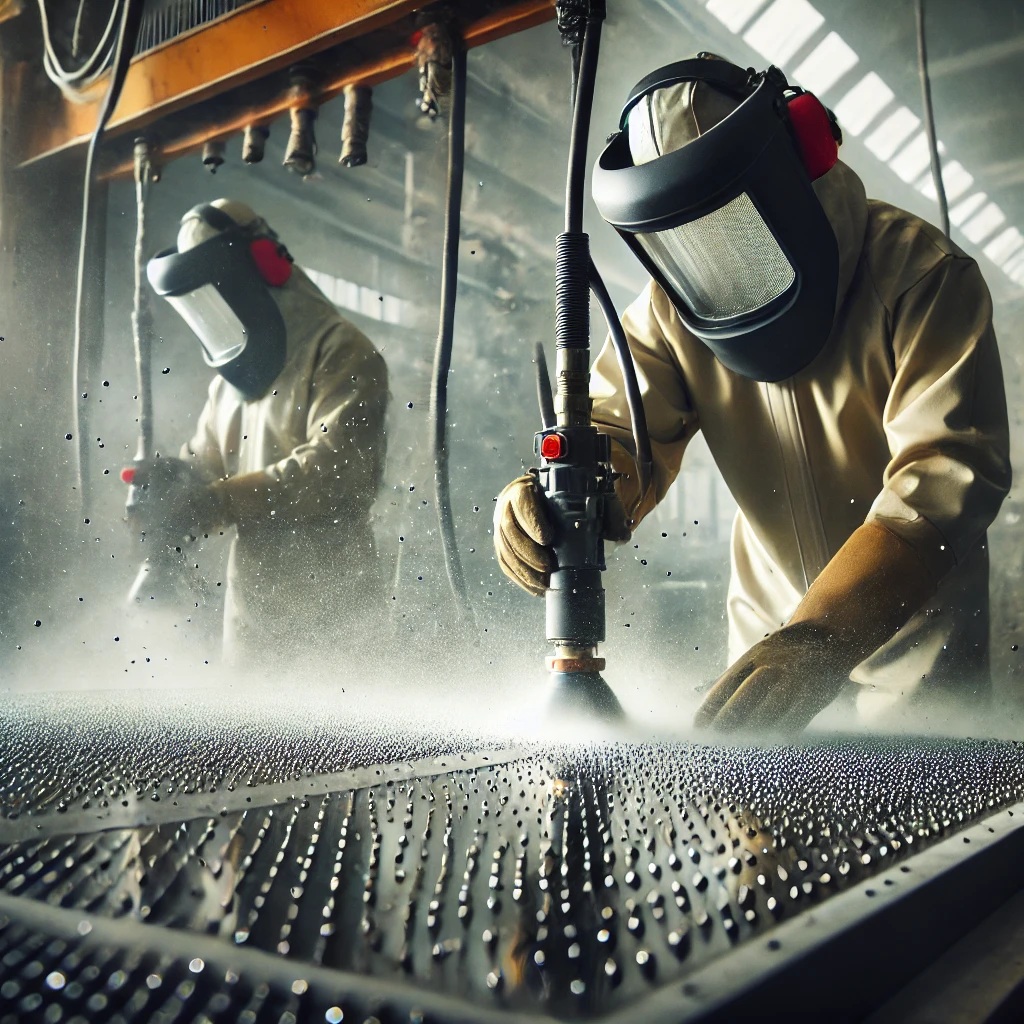
Introduction
Removing old paint or coatings from surfaces is a common challenge across industries like automotive, construction, and restoration. Among the available methods, glass bead blasting stands out as an effective and versatile option. But can it truly remove old paint or coatings? This article explores the process, its advantages, and limitations, helping you decide if glass bead blasting suits your needs.
What is Glass Bead Blasting?
Process Overview
Glass bead blasting is an abrasive technique that uses small glass beads propelled by compressed air to clean or finish a surface. Unlike harsher methods, this technique is non-aggressive, making it ideal for delicate surfaces or detailed cleaning.
Common Applications
- Removing paint and coatings.
- Cleaning metal surfaces like aluminum, stainless steel, and brass.
- Preparing surfaces for further treatments, such as painting or plating.
- Restoring delicate materials, including glass and ceramics.
Can Glass Bead Blasting Remove Old Paint or Coatings?
Yes, glass bead blasting can effectively remove old paint or coatings, but its suitability depends on several factors:
Factors Influencing Effectiveness
- Type of Coating: Works well on thin or moderately thick layers of paint and coatings.
- Surface Material: Ideal for metal, glass, or hard surfaces. Less effective on porous or soft materials.
- Equipment Settings: Pressure and bead size determine how aggressively paint or coatings are removed.
Scenarios Where It Works Best
- Removing paint from automotive parts without damaging the underlying metal.
- Stripping coatings from metal machinery or industrial tools.
- Cleaning delicate materials like glass windows or ceramics where surface integrity is crucial.
Advantages of Glass Bead Blasting for Paint Removal
1. Non-Damaging to Surfaces
- The rounded beads are gentle, preserving the material’s integrity.
- Excellent for soft metals or fragile items like glass.
2. Precision
- Offers high control, making it suitable for intricate surfaces.
- Avoids over-stripping or damaging surrounding areas.
3. Eco-Friendly
- Glass beads are reusable, reducing waste.
- Contains no harmful chemicals or solvents.
4. Versatility
- Effective on various materials, including steel, aluminum, and fiberglass.
Limitations of Glass Bead Blasting
1. Ineffective on Thick Coatings
- Struggles with extremely thick or heavily bonded paint layers.
- Additional methods (e.g., chemical stripping) may be needed.
2. Time-Consuming
- Takes longer than more aggressive blasting methods like sandblasting for tough coatings.
3. Cost Considerations
- Equipment and material costs can be higher due to specialized machinery and reusable media.
4. Surface Preparation Requirements
- The surface must be cleaned of grease or oil before blasting for optimal results.
Comparing Glass Bead Blasting with Alternative Methods
| Feature | Glass Bead Blasting | Sandblasting | Chemical Stripping |
|---|---|---|---|
| Surface Preservation | Gentle on delicate surfaces. | Can be harsh and damaging. | No abrasion but risks chemical burns. |
| Precision | High, ideal for intricate surfaces. | Moderate, depending on grit. | Low, may affect non-coated areas. |
| Eco-Friendliness | Reusable beads, no chemicals. | Generates dust, requires safety measures. | Involves chemical disposal issues. |
| Time Efficiency | Moderate for paint removal. | Faster for heavy-duty tasks. | Slow and labor-intensive. |
Tips for Effective Glass Bead Blasting
- Choose the Right Bead Size: Smaller beads are better for detailed work, while larger beads work on tougher coatings.
- Adjust Pressure Settings: Lower pressures prevent damage to delicate surfaces; higher pressures remove tougher coatings.
- Wear Safety Gear: Protect yourself with goggles, gloves, and respiratory equipment to avoid exposure to particles.
- Clean the Surface First: Remove any grease or debris to maximize blasting efficiency.
Ideal Applications for Glass Bead Blasting
- Automotive Restoration: Removing paint from body panels, wheels, and engine parts.
- Industrial Equipment Maintenance: Stripping coatings from machinery components.
- Restoration Projects: Cleaning antique or delicate items like glassware or fixtures.
- Surface Preparation: Preparing metals for welding, painting, or anodizing.
Conclusion
Glass bead blasting is an effective method for removing old paint or coatings, offering a balance of efficiency, precision, and surface preservation. While it may not be the fastest method for thick or stubborn coatings, its gentle yet effective approach makes it ideal for delicate surfaces and detailed projects. Understanding its strengths and limitations can help you decide whether it’s the right solution for your needs.
FAQs
1. Can glass bead blasting damage surfaces?
No, it’s a non-aggressive method designed to preserve surface integrity, especially for delicate materials like glass or soft metals.
2. Is glass bead blasting safe for removing lead-based paint?
While effective, caution is required due to hazardous particles. Use proper safety equipment and work in a well-ventilated area.
3. How does glass bead blasting compare to sandblasting?
Glass bead blasting is gentler, making it suitable for delicate surfaces, while sandblasting is more aggressive and better for heavy-duty tasks.
4. Can glass bead blasting be used on wood surfaces?
It is not ideal for wood as it can roughen or damage the surface. Other methods like sanding are more suitable.
5. Are glass beads reusable?
Yes, glass beads are reusable multiple times, making the process eco-friendly and cost-efficient.
